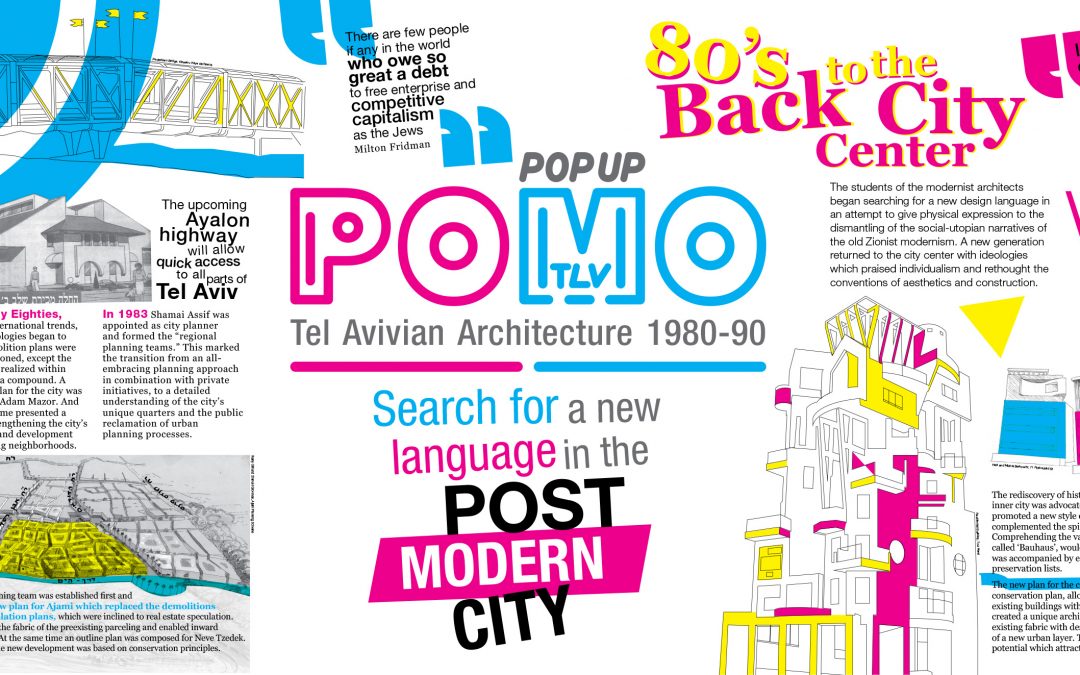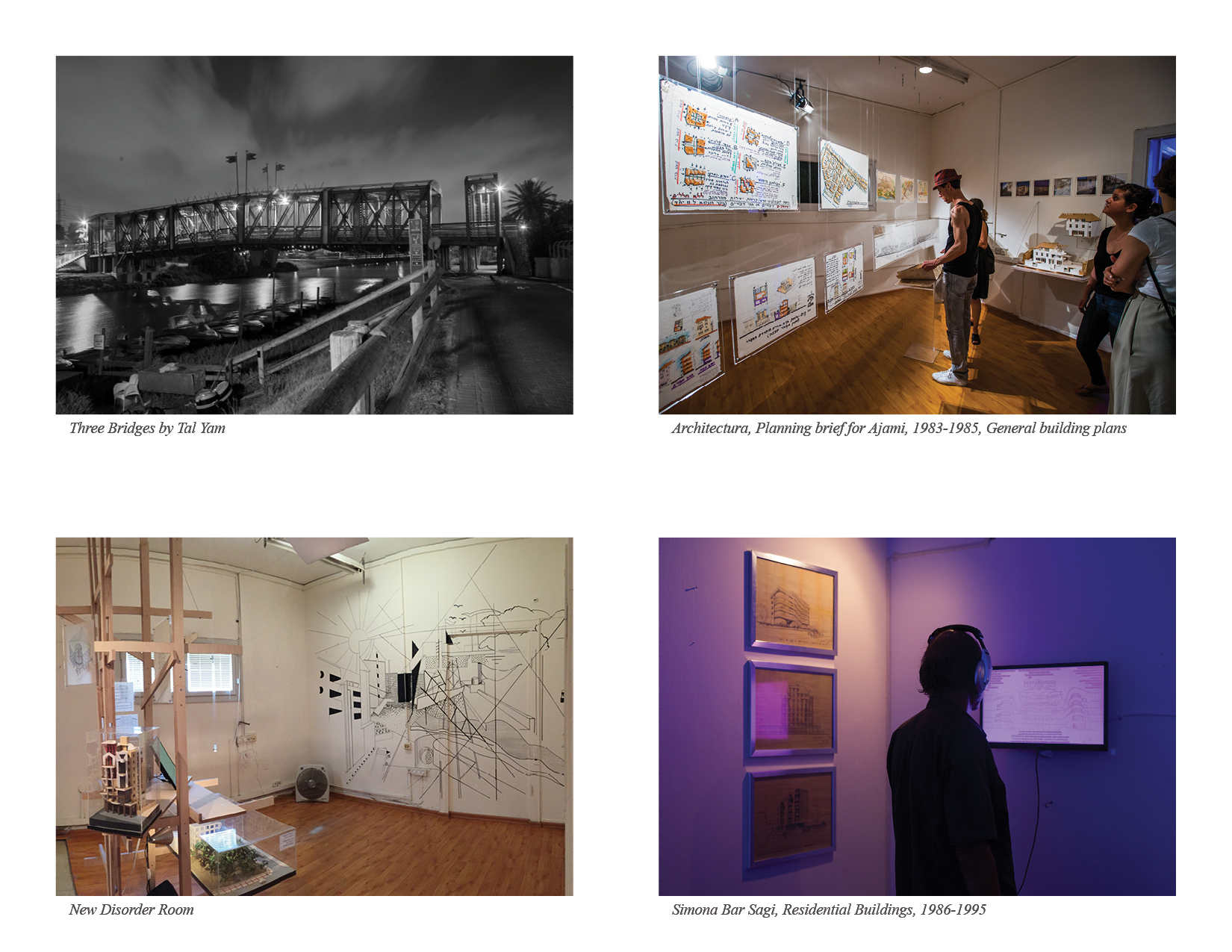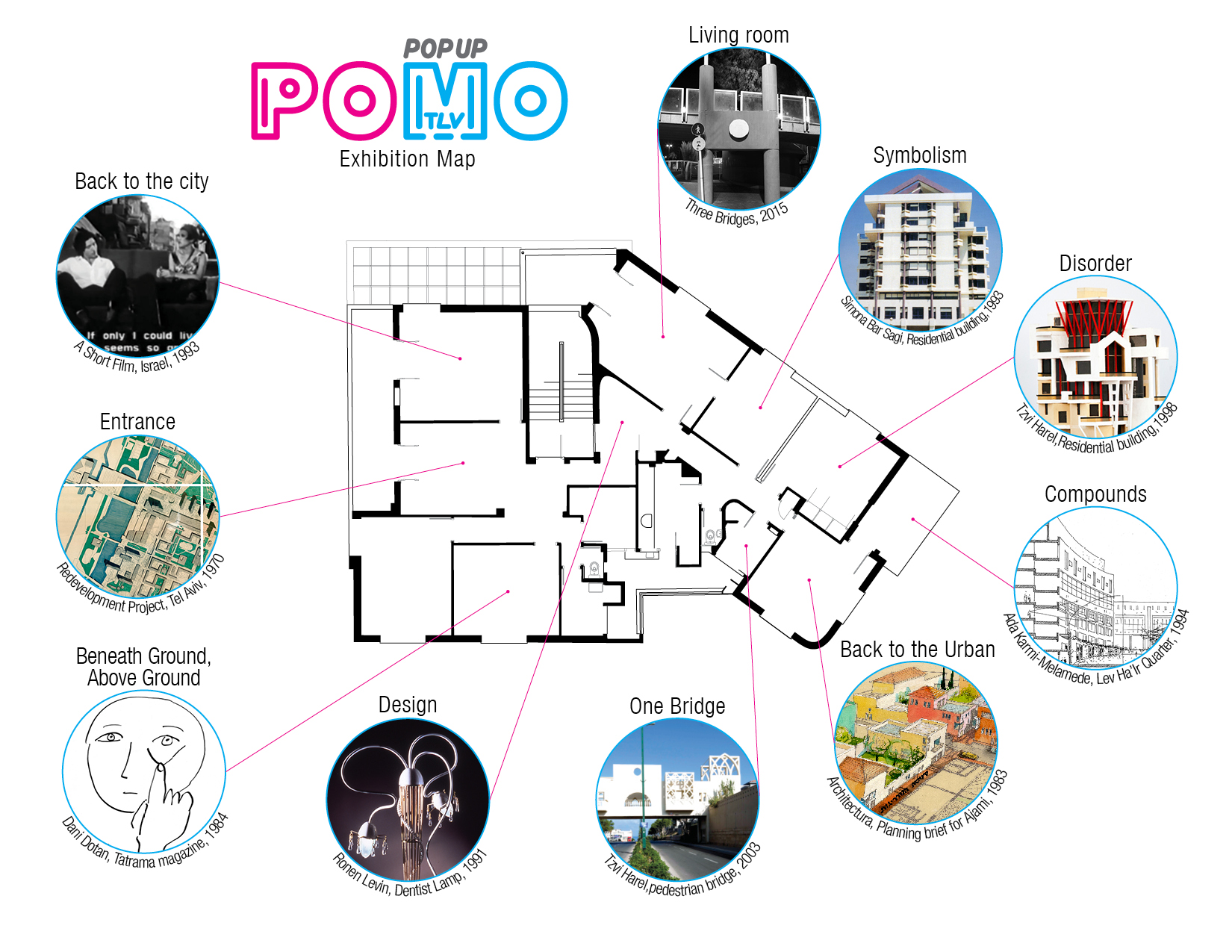Elad Horn (MDes CC ’16) curated the exhibition ‘PopUp PoMo TLV’ last summer in The White City Center of Tel Aviv. The show presented the story of Tel Avivian Architecture in 1980s-90s as a search for a new language in the postmodern city.
Postmodernism, in Israel, is commonly regarded as an exclusively aesthetic style which failed to maintain its influence. This study initiates a pioneering and clear-sighted debate about the term and considers it as a signifier for many of the wider and richer cultural transformations which developed contemporaneously in Israel under political and economic instability. The rearrangement of capital and social orders, partly as a result of the 1977 political upheaval, rapidly altered the urban and design concepts of the city. These shifts were developed and intensified and are relevant to the interpretation of Tel Aviv today. The scholastic aim of this research is to bring to light these streams of ideas, which have been overlooked by scholars and city dwellers alike. In the midst of intense neoliberal urban restructuring, there is a need for research that goes beyond the classical analysis of urban growth, and focuses instead on architectural and urban transformations as a result of the flow of global capital, and its effect on the realities of cities, urban structures, and polity.
The main target of the Tel Avivian case study is to support a process of changing the common discourse regarding the postmodern wider scope. Elad took this attempt to test by forming the first platform for a public debate about late 20th-century design. He co-curated the exhibition PopUp PoMo TLV in July 2015, together with Jeremie Hoffmann, at the White City Center in the heart of the White City compound of Tel Aviv. The aim of the exhibition was to introduce a comprehensive understanding of this period after the demise of modernism from the perspective of design and culture and, more importantly, present the initial collection of knowledge to the public in order to found a well-formed debate.
The opening events included a keynote lecture by Dr. Stefan Trueby from TU Munich, “Architecture and Economy: Postmodernism and Beyond,” and a marathon of interviews with architects, planners, musicians, film makers and artists, “Talks on the Postmodern,” which took place throughout an entire day in the exhibition’s spaces. The exhibition was sponsored by the Tel Aviv Municipality and the German Federal Ministry for Building. It attracted hundreds of visitors and was promoted in the media, and was also covered in a full-page article in Haaretz daily newspaper by its senior architecture critic.





